Lorain, Ohio, 2020:
Ghost ship. Origin unknown.
A mysterious, badly rusted 90-foot hulk has sat abandoned for almost twenty years, under the Lofton Henderson Memorial Bridge in Lorain, Ohio, just west of Cleveland. City officials and members of the U.S. Coast Guard had no idea just when the abandoned ship arrived in the Black River harbour and decided to stay. Aground and untethered, with one lifeboat floating upside down alongside her, the forlorn ship is quietly rusting away on the muddy bank of the Black River, wide open to the curious who wander aboard and vandals who break, smash, and steal anything not locked away.
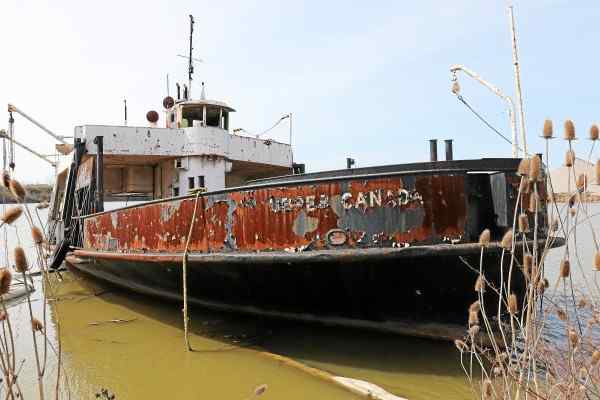
About ten years ago, the derelict vessel was inspected by the U.S. Coast Guard for environmental issues and, finding none, left it alone. According to the Great Lakes Vessels Online Index, maintained by Bowling Green State University, a man named Al Johnson took ownership of the Canadian vessel in 1999. Her faded name reads ‘Upper Canada’. Since then, ownership of and responsibility for the former ferry has been unknown. How she came to be here, a Canadian vessel abandoned in U.S. waters, no one knows. In order to salvage or remove it, someone would need to have a claim against it. No one ever has. The Lorain Port Authority want nothing to do with her. No one does. So today she sits, waits, and rusts away in the mud, forgotten like a broken, abandoned old vehicle in some equally forgotten, overgrown back field.
Kingston, Ontario, 1965
It had been a very long year for Kingston’s MPP Syl Apps, since he first received the terrible news. First, the news was great. Two ferries, the James Curran, built in 1947, and the John A. McPhail, built in 1955, were laid up with the October 1962 opening of the new international bridge connecting Sault Ste. Marie, Ontario and Sault Ste. Marie, Michigan. Both ferries were already owned by the Ontario Department of Highways and could carry eighteen cars and 450 passengers each. In service for several years, these reliable boats were the answer to Wolfe Island’s ferry problems. Plus, the shorter route just east of Kingston and the Wolfe Island village of Marysville meant 15 minute ferry service. Absolutely ideal.
Then came the bad news.
The “new” Wolfe Island ferries sank while being towed to Kingston from Sault Ste. Marie. Both of them.
It had been surreal. A sudden, unpredictable, freakish tornado sprang up, catching all three vessels on wide Lake Huron. Sinking not one ferry but both, while sparing the tug and its crew. Now, both ferries were lying deep at the bottom of Lake Huron, unreachable and unsalvageable. Gone. Syl Apps soon realized his election promise of two years ago, for a shorter ferry route with better, free, ferry service with newer ferries provided by the Province of Ontario for the people of Wolfe Island, was at the bottom of Lake Huron. So, too, seemed his up-coming chance for re-election.
The free ferry service as promised, went into effect on Monday, October 19, 1964, but with only one boat. The fairly reliable and tireless MS Wolfe Islander, which had been plodding along regularly for almost twenty years. Many upset islanders wanted talks reopened about a bridge option. Only that wasn’t going to happen. At least not yet.
To receive both federal and provincial government assistance, the only way to make a bridge link to Wolfe Island feasible, was to connect the island internationally to Cape Vincent N.Y. and also link up to nearby Howe Island, another Ontario farming community. Federal Finance Minister Mr. E.J. ‘Ben’ Benson said, “Highways are the responsibility of the province and this includes the Kingston-Wolfe Island link. The fact that the province accepts this responsibility is evidenced by its undertaking to bear the full operating cost of ferries between Wolfe Island and the mainland, which will cost several hundred thousand dollars a year. I believe these funds should be used instead towards the cost of a Kingston-Wolfe Island bridge. I do not rule out the possibility of some federal assistance in this matter, but the main initiative must come from the province as highways are its responsibility.”
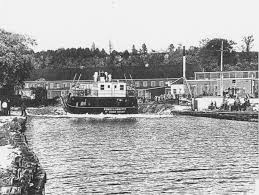
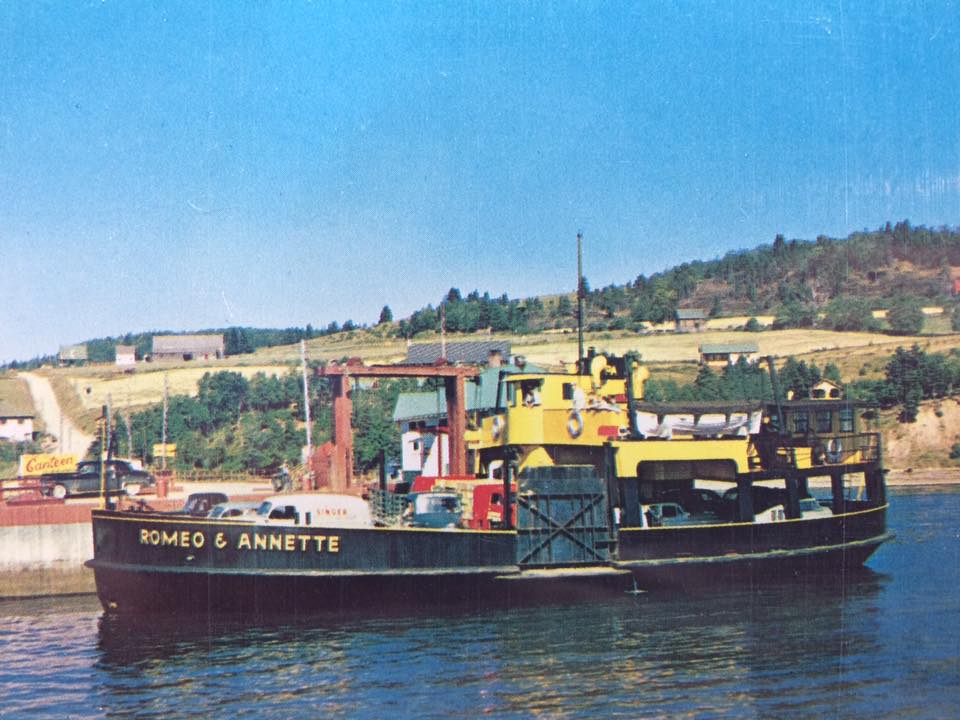
The decision was made. The twelve car ferry Romeo & Annette was purchased from Captain Romeo Allard of Restigouche Ferries, by the Ontario Department of Highways. Designed by Captain Allard specifically for his run between Dalhousie, New Brunswick and Miguasha Point, Quebec, across the Bay of Chaleur, the Romeo & Annette, built by Russell Brothers of Owen Sound in 1949, was designed for a comfortable ride in a heavy sea. The new 90 ft by 36 ft beam side loading boat could hold 12 cars easily, her plan had said. Powered by twin Cummins diesel engines with a total of 550 hp, which turned twin 50 inch, 3 bladed props, gave her a speed of 10.5 kts. Christened and launched at Russell Brothers Shipyard in Owen Sound on Saturday May 28, 1949, the boat prepared for her voyage to Canada’s east coast shortly after.

The Romeo & Annette served the people of Chaleur Bay faithfully for sixteen years. In October 1965, she was purchased by the Ontario Department of Highways and departed New Brunswick, sailing westward toward her new home in Kingston, Ontario. Captain Allard was at her helm. Two days later she arrived in Quebec City, where Captain Allard was relieved by Sr. Ferry Captain R.F. Fawcett and Chief Engineer Winfield Woodman, both of Wolfe Island. She arrived on Monday October 11, 1965. “It took us about three days to get here and tie up in Kingston,” said Captain Fawcett.
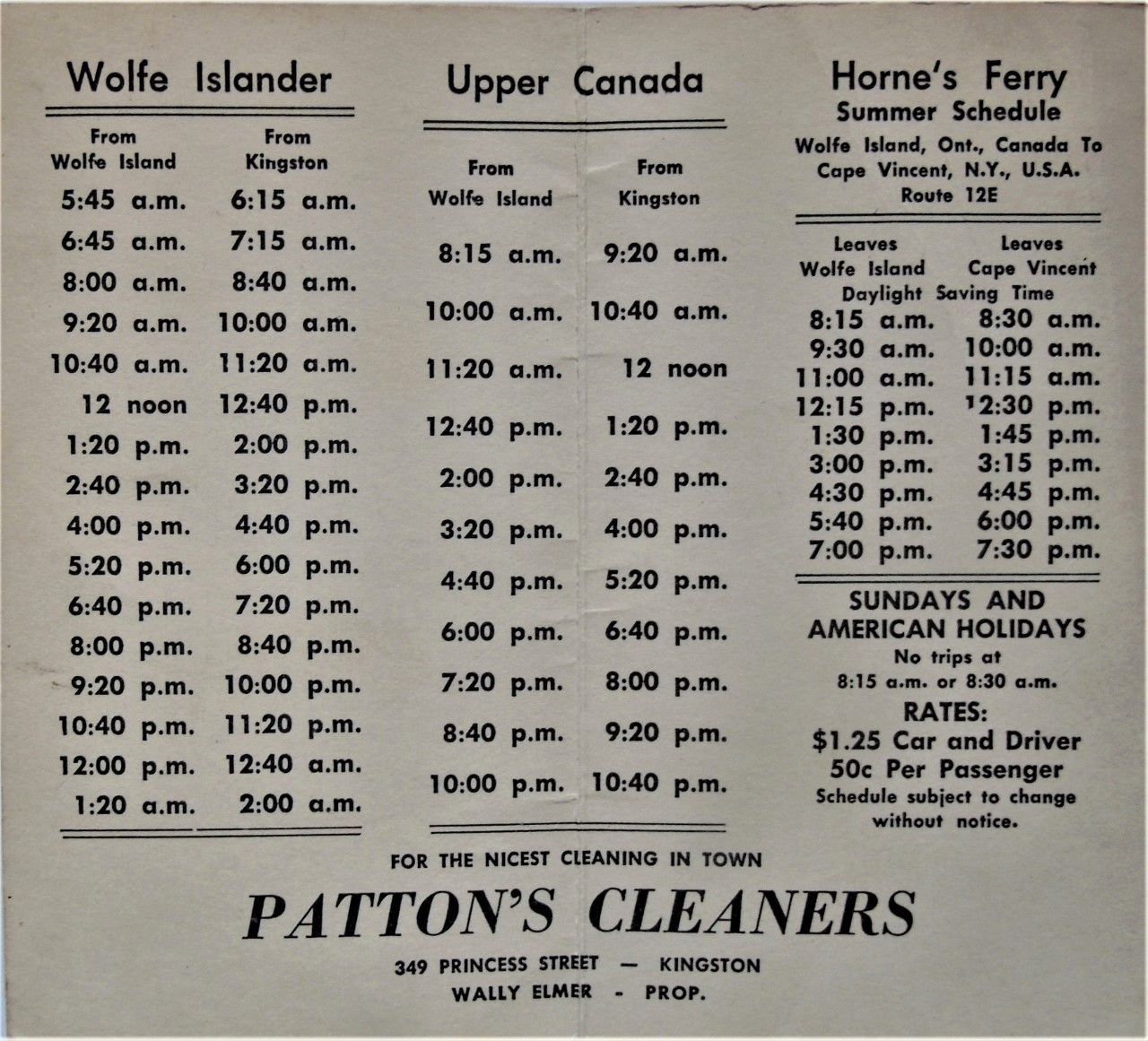
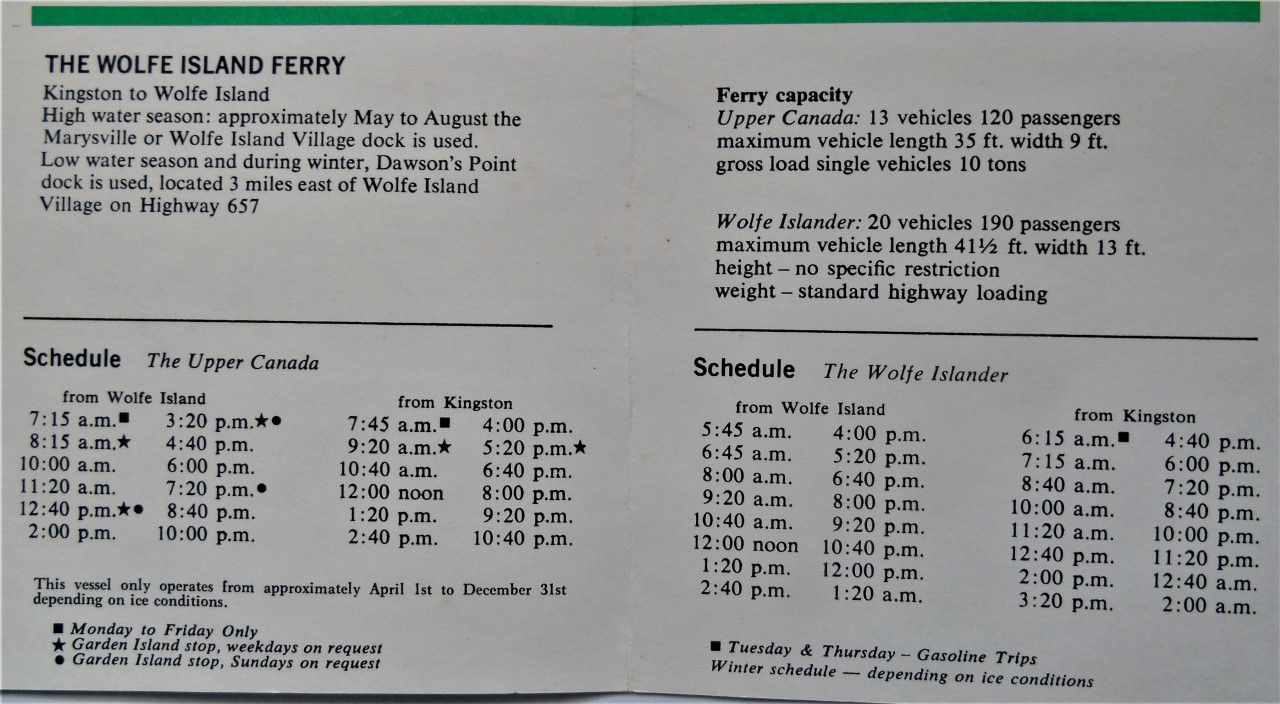
The following spring, a new schedule was ready for both ferries. The name “Upper Canada” appeared on both sides forward and across her stern, replacing “Romeo & Annette." “There was no ceremony for her new name or when she went into service,” said Captain Fawcett. “Once the ice went out, the Upper Canada went into service alone. The Wolfe Islander then tied up for the first major refit she’d ever had.”
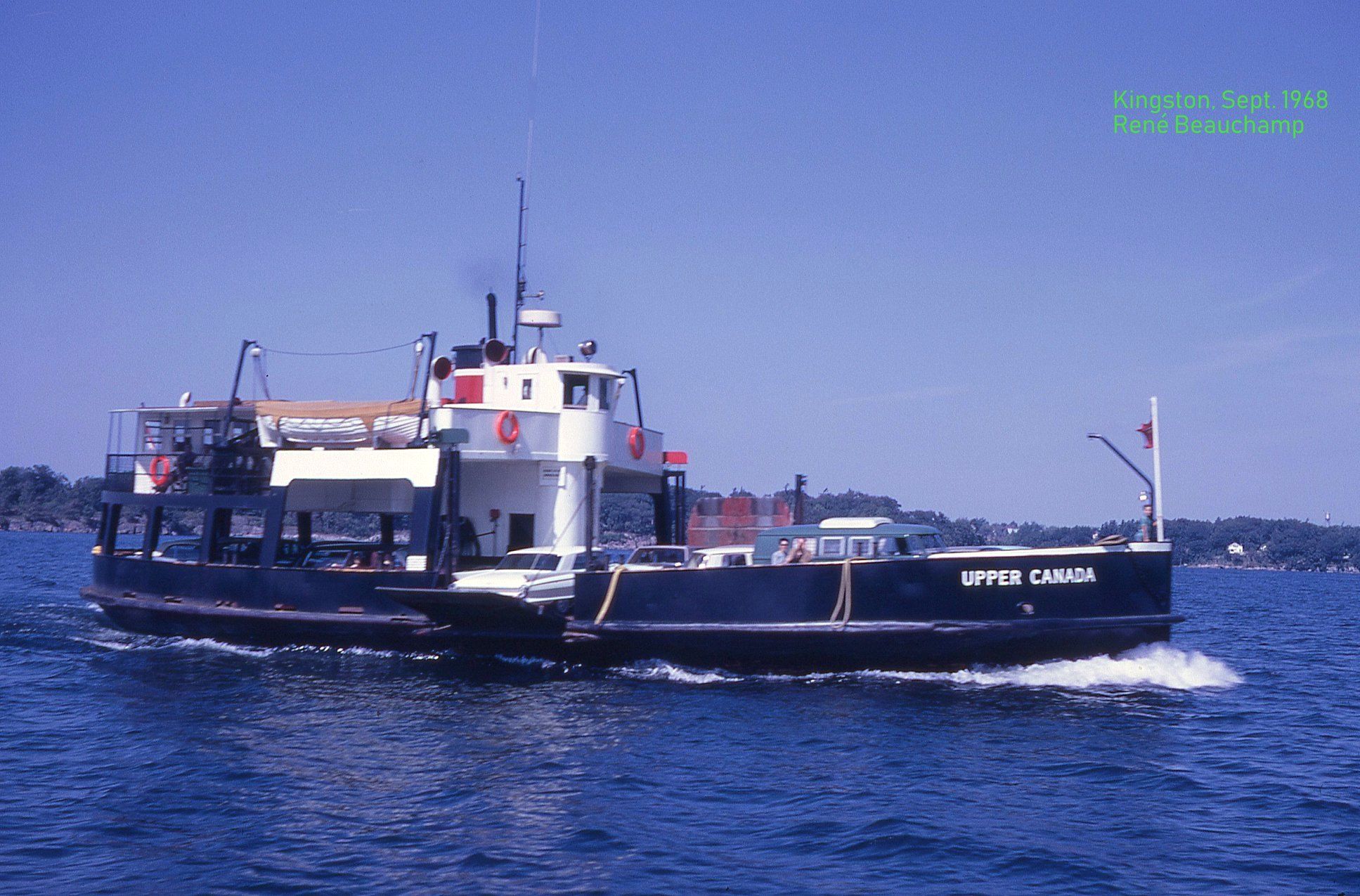
Other Wolfe Islanders remembered their new boat and some of her wild trips. Being very wide she was very stable. This meant in rough weather she would recover from a roll very quickly. “This ferry was scary,” remembered Susan Field. “I remember dreading school … bracing our feet on the opposite bench and praying not to throw up.” Susan Staley: “I remember the rockin’ and rollin’ in bad weather. I never got seasick.” Others weren’t so lucky. Cathy Batley: “I spent a lot of time in the washroom being seasick.” Beverly Hogan: “A very rough ride at times. I thought she was going to roll over!” Semoine Fawcett: “On rough days you couldn’t stay on the seats in the cabin.” Marrianne Hawkins: “Sliding off the seats in high winds. I don’t think it ever stopped running but it bounced around like a cork!” Bev McRae: “I remember one night when my car filled with water up to my knees!”
Captain Wayne Eves well remembered that night. November 10, 1975, later called the Edmund Fitzgerald storm, when an American Great Lakes freighter disappeared with all 29 crew members on Lake Superior. Very high winds and seas also hit the Kingston area that night. Captain Lewis Kiell tied up the Wolfe Islander in Kingston around 4:00 pm; in the building winds and seas, it had taken him almost an hour to reach Kingston from Dawson Point, normally a 20 minute trip. Captain Eves took over and would continue service with the Upper Canada into Marysville.
“At one point, somewhere around seven o’clock, the weather got really nasty,” Eves remembered. “I was steering well above the Kingston Shipyard, heading out of the harbour, when the waves started breaking over the starboard bow, sending heavy spray clear over the wheelhouse.” Later in Kingston, wringing out his socks, Eves noticed that the car deck was ankle deep in water, with it running hard out of the scuppers. Several cars, especially those parked up in the bow, had water pouring out of every nook and cranny that it had managed to seep into, as their wide eyed and white knuckled drivers drove carefully off. One driver actually made the sign of the cross as he rolled over the ramp onto terra firma!
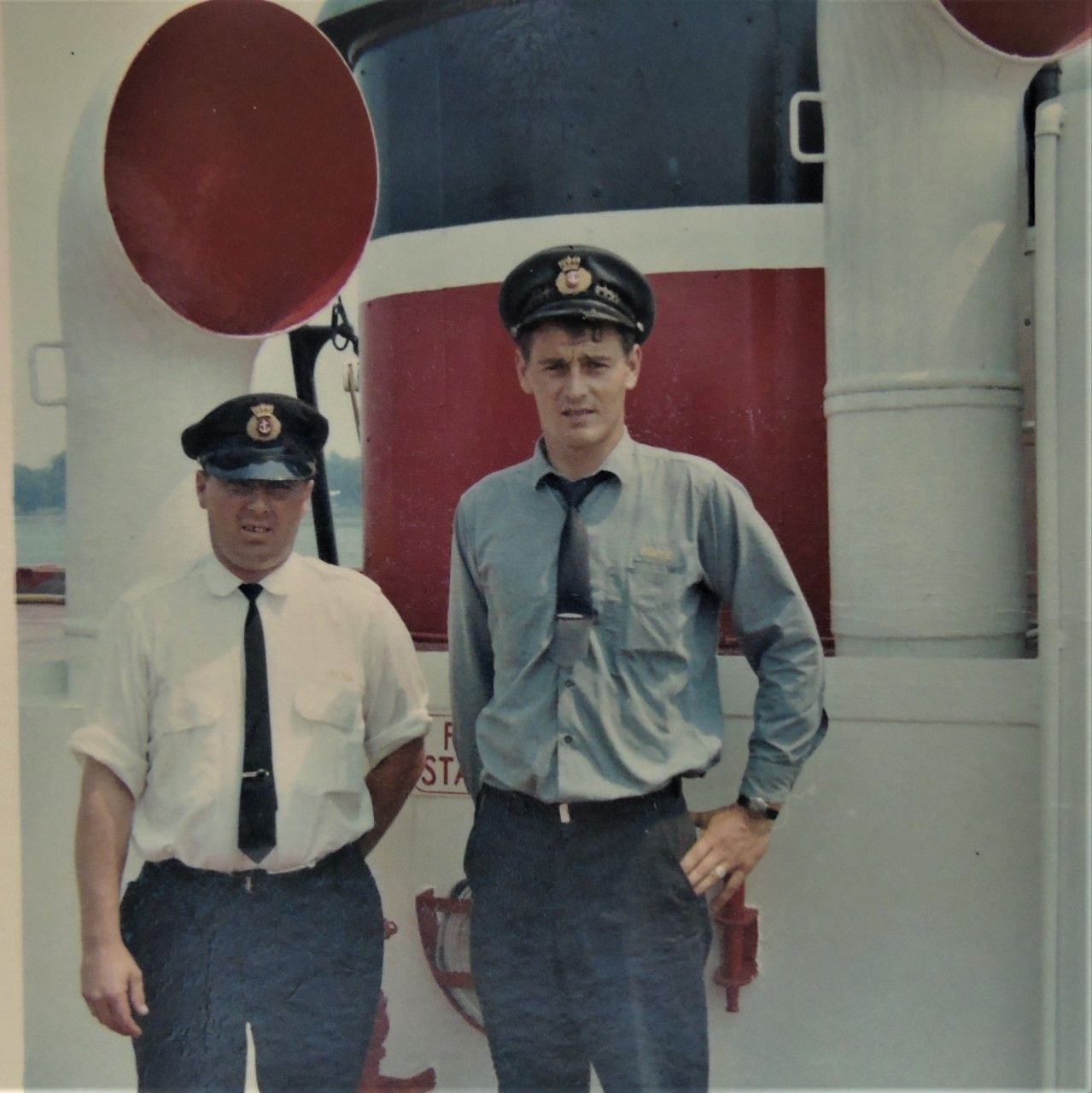
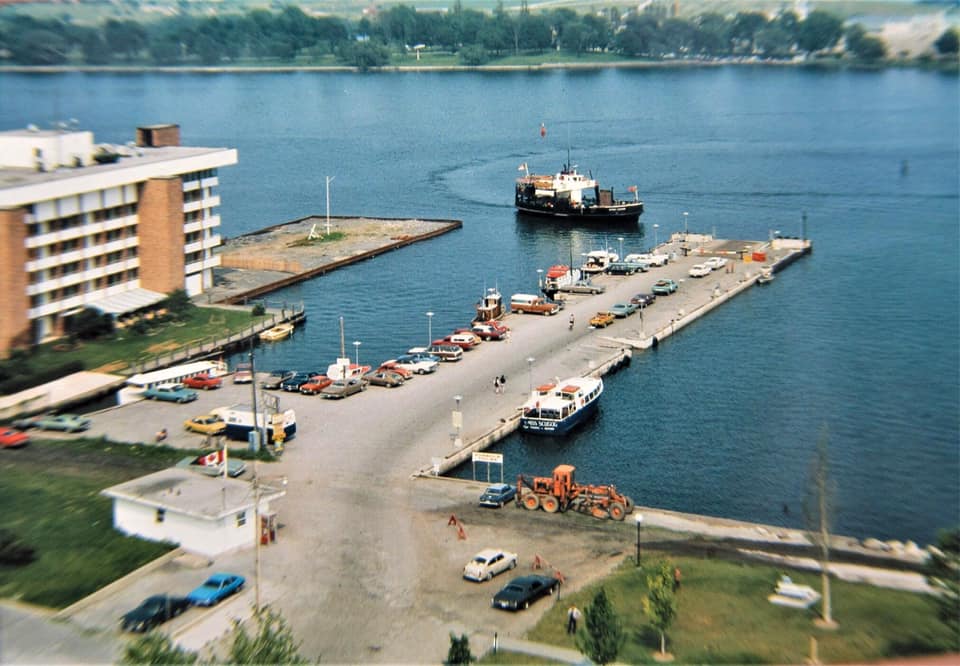
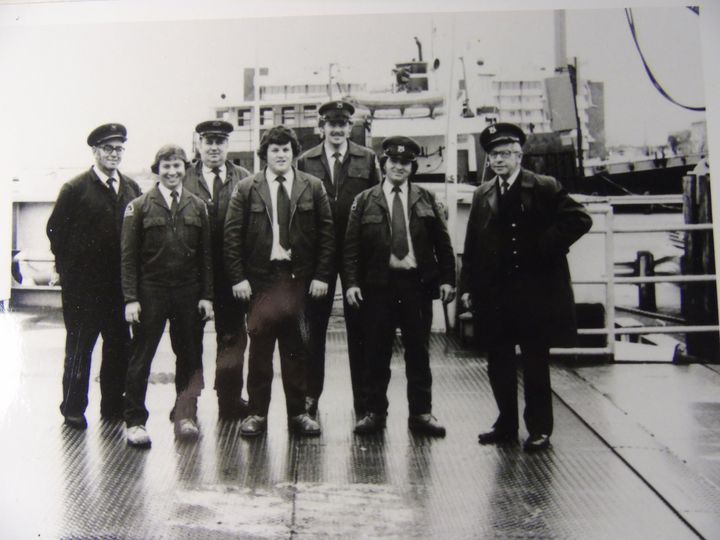
Leamington, Ontario, 1977
In 1976, both ferries were replaced by the new, state of the art Wolfe Islander III, built at Port Arthur Shipyard in Thunder Bay. This new ferry could carry 50 autos, more cars than the other two combined. On July 15, 1977 Captain Harold Hogan and crew delivered the Upper Canada to Leamington, Ontario. Now part of the Ontario Northland Marine Service, she would be a backup ferry for the Pelee Islander. When the new Jimaan built at Port Weller Shipyard, went into service at Pelee Island in 1991, Upper Canada departed once more, heading west for LaSalle, just south of Windsor, Ontario.
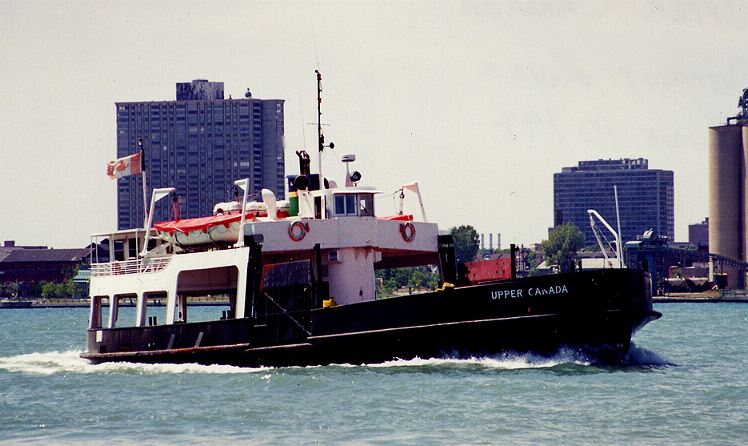
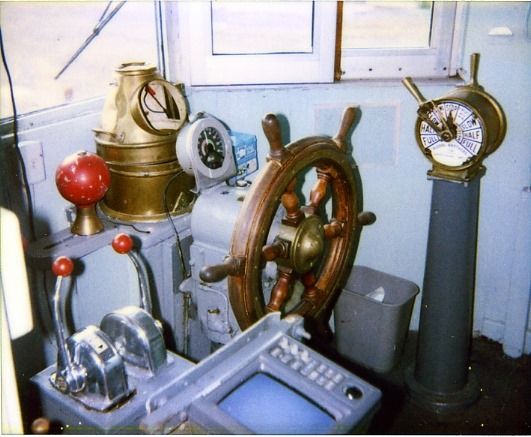
Christian Island, Georgian Bay
The Upper Canada was leased to the Beausoleil First Nation for Christian Island service on Georgian Bay, from 1996 to 2000. In the fall of 1999, she was replaced by the larger Sandy Graham, from Norfolk, Virginia. In early 2000, not needed any longer, she returned to Leamington, Ontario. Then, shortly after, she tied up in Lorain, Ohio. In 2008, her registration expired and was not renewed.
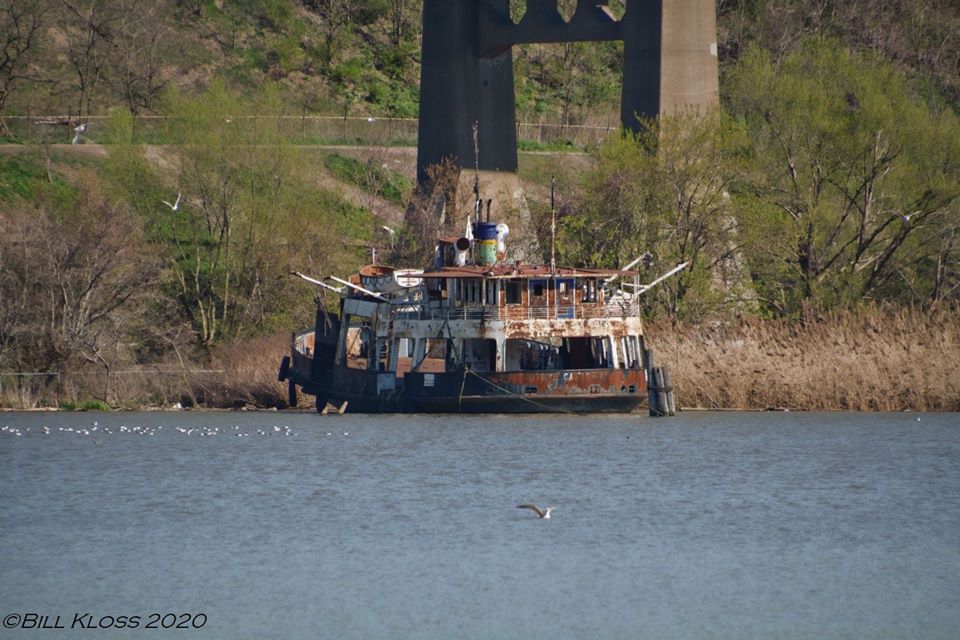
By then, she lay abandoned in a mudbank, her mooring lines having rotted and parted with age. Her wheelhouse and cabin doors were now askew on broken hinges. All windows were smashed out. Garbage and junk was strewn here and there. Time has taken its toll. Vandals have taken the rest. Her faded name, now almost gone, and like her once proud coat of paint, continues to blister and peel, falling silently into the muddy water until it too, like the rest of her, becomes a rusty mystery.
By Brian Johnson
Brian Paul Johnson was one of 5 captains of the Wolfe Island ferry Wolfe Islander III. Retired now, he has worked for the Ontario Ministry of Transportation Eastern Region Ferries for more than 40 years, recently celebrating 34 years as captain. He has also recently retired as captain of the St. Lawrence Cruise Line's Canadian Empress.
Be sure to read Capt. Brian Johnson's other TI Life articles and stories - will appreciate each one:
June 2009 - 2019 - 46 articles: Brian Johnson | Thousand Islands Life Magazine (tilife.org)
2019-: Brian Johnson - Thousand Islands Life Magazine & April Johnson DiRinaldo & Brian Johnson - Thousand Islands Life Magazine
Posted in: Volume 16, Issue 10, October 2021, History, People, Places
Please click here if you are unable to post your comment.
